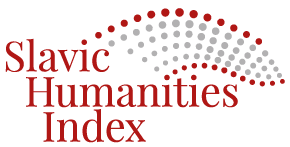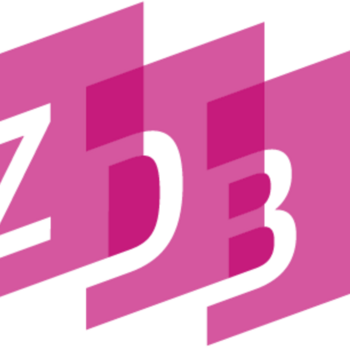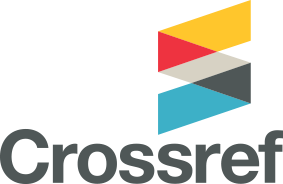Uloga digitalne humanistike u transformaciji društvenih i humanističkih nauka / The Role of Digital Humanities in the Transformation of Social Sciences and Humanities
DOI:
https://doi.org/10.48052/19865244.2025.2.229Keywords:
digital humanities, distant reading, digital tools, content analysisAbstract
Digital humanities is an interdisciplinary academic field that connects digital tools with research in the humanities and social sciences, combining traditional humanistic methodologies with contemporary technologies. The aim of this paper is to provide an overview and analysis of current topics in digital humanities, with a particular focus on the method of distant reading. The analysis is based on works indexed in the Web of Science databases, specifically within the Arts & Humanities Citation Index (A&HCI) and the Social Sciences Citation Index (SSCI). The corpus consists of 28 scholarly articles. The results of the analysis show that the papers can be grouped into two thematic categories: the first includes studies that engage in critical reflection on digital humanities as a field, while the second comprises works that focus on the practical application of digital humanities methods in various academic disciplines. The most represented works are from the field of literary studies. Special attention is given to encouraging the academic community in Bosnia and Herzegovina to consider integrating digital humanities approaches into their own research practices. As an illustration of the possibilities offered by digital tools, the paper includes a case study using the Voyant tool.
References
Bilis, H. & Mawhorter, P., 2021. Mapping social networks in La Princesse de Clèves: the 'commerce' of Lafayette's court. French Studies, 75(2), pp.184–204. https://doi.org/10.1093/fs/knab036.
Buelens-Terryn, M. and Smits, T. (2024) ‘Projecting the world: The mediated geography of the projection lantern in Belgium c.1900–c.1920’, Journal of Historical Geography, 86, pp. 403–421. Available at: https://doi.org/10.1016/j.jhg.2024.10.007 (Pristupljeno: 29 July 2025).
Farinola, A., 2023. Hermeneutical postphenomenology: Computational tools and the lure of objectivity. Digital Scholarship in the Humanities, 38(3), pp.1078–1087. https://doi.org/10.1093/llc/fqac074.
Fletcher, A., 2021. Why computers will never read (or write) literature: A logical proof and a narrative. Narrative, 29(1), pp.1–28. https://doi.org/10.1353/nar.2021.0000.
Fondacija Mak Dizdar, 2019. U kamenu uklesano. [online] Stecakmap.info. Dostupno na: https://stecakmap.info/ [Accessed 19 May 2025].
Gefen, A., 2024. The time of data. Theoretical thinking, statistical thinking. Neohelicon, 51, pp.117–126. https://doi.org/10.1007/s11059-024-00743-y.
Goldis, A.C., 2022. Literary studies facing the ‘Three cultures model’. Transylvanian Review, 31(1), pp.182–189.
Greene, D., O’Sullivan, J. & O’Reilly, D., 2024. Topic modelling literary interviews from The Paris Review. Digital Scholarship in the Humanities, 39(1), pp.142–153. https://doi.org/10.1093/llc/fqad098.
Hajdarpašić, L., Khattab, Dž. & Dizdar, S., 2023. Uloga metapodataka u prezentaciji turbeta u digitalnom okruženju. Bosniaca, 28, pp.107–126. https://doi.org/10.37083/bosn.2023.28.107.
Handžić, M. & Dizdar, S., 2016. Knowledge management meets humanities: A case study of diplomatic correspondence visualisation. In: IFKAD 2016: Towards a New Architecture of Knowledge: Big Data, Culture and Creativity, pp.1445–1457.
Handžić, M. & Dizdar, S., 2017. Picturing the past: A case of knowledge application in archaeology. [online] In: IFKAD 2017: 12th International Forum on Knowledge Asset Dynamics, pp.1251–1261. Dostupno na: http://www.ifkad.org/Proceedings/2017/IFKAD2017_PROCEEDINGS_eBOOK.pdf.
Harvard University Libraries, n.d. Milman Parry Collection of Oral Literature. [online] Dostupno na: https://mpc.chs.harvard.edu/.
Haverals, W., Geybels, L. & Joosen, V., 2022. A style for every age: A stylometric inquiry into crosswriters for children, adolescents and adults. Language and Literature, 31(1), pp.62–84. https://doi.org/10.1177/09639470211072163.
Hedesan, G.D., 2024. Fire, Vulcanus, Archeus, and Alchemy: A hybrid close-distant reading of Paracelsus’s thought on active agents. Ambix, 71(3), pp.271–300. https://doi.org/10.1080/00026980.2024.2367396.
Hui, H., 2023. What can digital humanities do for literary adaptation studies: Distant reading of children’s editions of Robinson Crusoe. Digital Scholarship in the Humanities, 38(4), pp.1564–1576. https://doi.org/10.1093/llc/fqad059.
Kallenbach, U. & Lawaetz, A., 2023. Levels of presence in the drama text: Between close and distant reading. Orbis Litterarum, 78(5), pp.401–420. https://doi.org/10.1111/oli.12399.
Kedrova, M.O., 2022. Digital humanities and distant reading concept by Franco Moretti. Voprosy Filosofii, 8, pp.148–158. https://doi.org/10.21146/0042-8744-2022-8-148-158.
Kislev, S.F., 2020. On the word BUT and its function: An investigation, using algorithms, into Hegel’s method of paragraph composition. SubStance, 49(1), pp.41–73. https://doi.org/10.1353/sub.2020.0002.
Kodrić Zaimović, L., 2021. Humanističke nauke u postdigitalnom dobu: uloga i mogućnosti pametnih biblioteka. Lingua Montenegrina, (26), pp.1–20.
Kodrić Zaimović, L. & Kodrić, S., 2020. (In)Visibility of Bosniak and Croatian cultural ties and relations, and the possibility of their representation in the context of digital humanities. In: Empowering the Visibility of Croatian Cultural Heritage through the Digital Humanities. Cambridge Scholars Publishing, pp.299–321.
Lange, C. et al., 2021. Text mining Islamic law. Islamic Law and Society, 28(3), pp.234–281. https://doi.org/10.1163/15685195-bja10009.
Lvoff, B., 2021. Distant reading in Russian formalism and Russian formalism in distant reading. Russian Literature, 122–123, pp.29–65. https://doi.org/10.1016/j.ruslit.2021.07.003.
Maryl, M. & Eder, M., 2023. Słowozbiory tekstów drugich. Teksty Drugie, 1, pp.346–364. https://doi.org/10.18318/td.2023.1.21.
Mehl, S., 2021. Why linguists should care about digital humanities (and epidemiology). Journal of English Linguistics, 49(3), pp.331–337. https://doi.org/10.1177/00754242211019072.
Mihurko, K. et al., 2024. Network analysis in the electronic collection letters: The perspective of metadata and semantic connections of vocabulary. Primerjalna književnost, 47(2), pp.31–44. https://doi.org/10.3986/pkn.v47.i2.02.
Musgrove, N. (2019) ‘Twice forgotten: assessing the scale and nature of foster care coverage in Australian historical newspapers’, The History of the Family, [online] Available at: https://doi.org/10.1080/1081602X.2019.1647264 (Pristupljeno: 29 July 2025).
Oberbichler, S., 2020. Argumentation analysis of historical migration discourses in newspaper reports using Atlas.ti. Zeitgeschichte, 47(7), pp.467–490. https://doi.org/10.14220/zsch.2020.47.4.467.
Orekhov, B. & Fischer, F., 2020. Neural reading: Insights from the analysis of poetry generated by artificial neural networks. Orbis Litterarum, 75(5), pp.230–246. https://doi.org/10.14220/zsch.2020.47.4.467.
Ramsey, S., 2010. The hermeneutics of screwing around; or what you do with a million books. In: K. Kee, ed., Pastplay: Teaching and Learning History with Technology. University of Michigan Press, pp.111–120.
Rockwell, G., 2024. Voyant Tools (voyant-tools.org). [online] Dostupno na: https://odh.byu.edu/wp-content/uploads/Rockwell-Voyant.pdf [Accessed 12 May 2025].
Santos, D. & Alves, D., 2023. Placing GIS and NLP in literary geography: Experiments with literature in Portuguese. International Journal of Humanities and Arts Computing, 17(1), pp.47–64. https://doi.org/10.3366/ijhac.2023.0299.
Schneider, G., 2022. Systematically detecting patterns of social, historical and linguistic change: The framing of poverty in times of poverty. Transactions of the Philological Society, 120(3), pp.447–473. https://doi.org/10.1111/1467-968X.12252.
Stanković, R., Krstev, C. & Vitas, D., 2024. SrpELTeC: A Serbian literary corpus for distant reading. Primerjalna književnost, 47(2), pp.45–63. https://doi.org/10.3986/pkn.v47.i2.03.
Suissa, O., Zhitomirsky-Geffet, M. & Elmalech, A., 2023. Around the GLOBE: Numerical aggregation question-answering on heterogeneous genealogical knowledge graphs with deep neural networks. ACM Journal on Computing and Cultural Heritage, 16(3), pp.1–24. https://doi.org/10.1145/3586081.
Tabak, E., 2017. Digitalna humanistika: debate, aplikacije i izazovi. Univerzitet u Zenici. Dostupno na: https://unze.ba/digitalna_humanistika/digitalna_humanistika.pdf.
The University Library in Bratislava, 2003. Bašagić’s Collection of Islamic Manuscripts in the University Library in Bratislava. [online] Dostupno na: http://retrobib.ulib.sk/Basagic/frames.htm.
Unsworth, J., 2002. What is humanities computing, and what is not? [online] Illinois.edu. Dostupno na: https://www.ideals.illinois.edu/items/202.
van de Ven, I. & van Nuenen, T., 2022. Digital hermeneutics: Scaled readings of online depression discourses. Medical Humanities, 48, pp.335–346. https://doi.org/10.1136/medhum-2020-012104.
Viola, L. & Verheul, J., 2020. Mining ethnicity: Discourse-driven topic modelling of immigrant discourses in the USA, 1898–1920. Digital Scholarship in the Humanities, 35(4), pp.921–943. https://doi.org/10.1093/llc/fqz068.
Voyant-tools.org, n.d. Voyant Tools. [online] Dostupno na: https://voyant-tools.org/.
Zajc, I., 2024. Analyzing 90 Slovenian novels and the oeuvre of Ivan Cankar using computational stylometry. Primerjalna književnost, 47(2), pp.113–126. https://doi.org/10.3986/pkn.v47.i2.06.
Žigo, I.R., Lazić, N. & Čubrilo, M., 2023. Digitalna humanistika: neka viđenja. Sveučilište Sjever. Dostupno na: https://www.unin.hr/wp-content/uploads/Digitalna-humanistika-e-knjiga.pdf.
Downloads
Published
How to Cite
Issue
Section
License
Copyright (c) 2025 Pregled: časopis za društvena pitanja / Periodical for social issues

This work is licensed under a Creative Commons Attribution-NonCommercial 4.0 International License.














